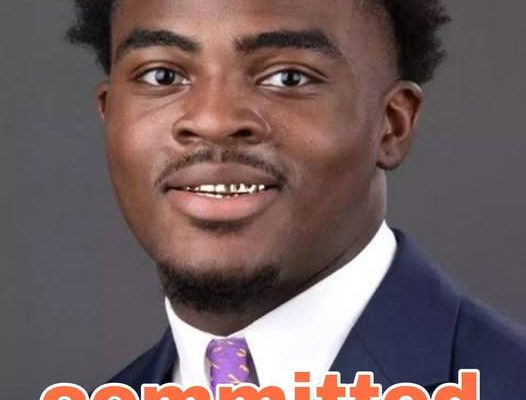The college football recruiting landscape was shaken once again when the nation’s No. 1-ranked high school football recruit officially announced his commitment to the University of Texas, choosing the Longhorns over fellow Southeastern Conference (SEC) powerhouses Tennessee and Florida. The decision marks yet another pivotal moment in Texas’ rise back to prominence on the national stage, while simultaneously dealing a stinging blow to two other historic programs that had poured their resources into landing the coveted five-star athlete. For the Longhorns, the addition of the top recruit in the country is not only a massive on-field upgrade, but also a validation of their recruiting strategy, program culture, and future trajectory under head coach Steve Sarkisian.
The player in question, a generational talent at quarterback, has been the consensus top recruit in the country for over a year. Standing at 6-foot-4, 220 pounds with elite arm strength, pinpoint accuracy, and the mobility to extend plays, he’s drawn comparisons to NFL stars before even graduating high school. Hailing from a talent-rich area in Georgia, the recruit had offers from virtually every major program in the nation, but ultimately narrowed his final choices to Texas, Tennessee, and Florida. Each program had its unique appeal. Tennessee offered an explosive offense led by a dynamic coaching staff, while Florida pitched a vision of being the centerpiece of a program desperate to return to championship glory. But it was Texas that captured his heart and mind, thanks to a combination of long-term vision, player development reputation, and an environment that closely mirrored his own goals both athletically and personally.
Texas had been quietly building momentum in the recruitment battle for months. Sarkisian, known for his quarterback acumen, made it a personal mission to land the No. 1 player. The Longhorns had already been riding high off a College Football Playoff appearance and a Big 12 Championship, and their upcoming transition to the SEC made the program even more attractive. The recruit cited Sarkisian’s track record with quarterbacks, having coached stars like Tua Tagovailoa and Mac Jones during his time at Alabama, as a critical factor. He spoke glowingly about Texas’ offensive system, which maximizes a quarterback’s skill set while preparing them for the complexities of the pro game. Beyond the Xs and Os, the recruit’s family emphasized the comfort they felt with the Texas staff, the commitment to academics, and the player-centric facilities that the university had invested in. All of it combined to make Austin feel like home.
The announcement, made via a nationally televised ceremony at his high school’s gymnasium, was met with cheers and confetti as the recruit donned a burnt orange Texas hat and unzipped his jacket to reveal a Longhorns t-shirt. Social media erupted instantly, with current and former Texas players expressing their excitement. Within hours, videos of his highlights went viral again, with fans and analysts proclaiming him the face of the next Texas championship run. Recruiting experts lauded the Longhorns’ ability to seal the deal, calling it one of the most impressive commitments of the decade. The significance of this decision can’t be overstated. With the No. 1 recruit onboard, Texas now boasts the No. 1 overall class for the 2026 cycle, ahead of Alabama, Georgia, and Ohio State. This single commitment could act as a domino effect, potentially swaying other top recruits who were undecided or leaning elsewhere. Already, several four- and five-star wide receivers have expressed renewed interest in Texas, eager to catch passes from a generational quarterback.
Tennessee, which had made a late surge in the recruitment process, was left stunned. The Volunteers had pitched their high-octane offense and early playing time as selling points, and for a while, it looked like Knoxville might be the destination. Florida, on the other hand, had banked on its long-standing tradition and SEC pedigree to lure the recruit to Gainesville. But ultimately, both programs couldn’t match what Texas had on the table, both in terms of immediate success and long-term potential. Still, the close nature of the recruitment underscores how fierce and competitive modern college football recruiting has become. NIL (Name, Image, Likeness) opportunities were rumored to play a part, though sources close to the player insisted that the decision was rooted more in football and academics than financial promises.
For Sarkisian and his staff, this commitment is another brick in the foundation they’ve been laying since taking over in Austin. When Sarkisian was hired, Texas was in the midst of a years-long identity crisis. The team had underachieved relative to its resources and brand power, and the locker room culture was reportedly fractured. Fast forward to today, and Texas is once again a national contender, flush with talent and cohesion. The addition of the No. 1 recruit further reinforces that Sarkisian is not only a program builder but also a recruiter who can win the big battles. His ability to connect with recruits on a personal level, articulate a vision, and back it up with results has changed the perception of Texas on the national stage.
What this means for Texas football moving forward is monumental. With the Longhorns set to enter the SEC full-time, the margin for error is slim. Programs like Alabama, Georgia, and LSU won’t wait for Texas to catch up. They expect them to compete immediately. The arrival of a generational quarterback raises the ceiling dramatically, especially when paired with the offensive weapons already in place. Texas has been stockpiling talent at receiver, tight end, and offensive line—positions that directly support quarterback success. With the nation’s top player under center, the Longhorns now have a real chance to not only win the SEC but also contend for national championships on a consistent basis.
Beyond the football field, the impact will also be felt in recruiting offices across the country. The perception of Texas as a sleeping giant that’s finally waking up is now mainstream. Younger recruits, particularly those from the South, see Texas not as a Big 12 school trying to break through but as a legitimate SEC powerhouse in the making. The commitment also strengthens Texas’ visibility in talent-rich states like Georgia and Florida, regions that have traditionally been dominated by SEC rivals. If Texas can continue to poach elite talent from those areas, it will only add fuel to a fire that seems to be catching rapidly.
There’s also a psychological component to this decision. For years, critics have argued that Texas was all hype and no substance. That the program, though rich in tradition and money, lacked the grit and vision to truly reclaim its former glory. This commitment flies in the face of that narrative. It shows that Texas can go toe-to-toe with the big boys in recruiting and win. It shows that elite talent sees a future in Austin. And most importantly, it shows that Texas is no longer just talking about being back—they’re proving it.
The pressure will now be immense. Fans will expect immediate impact and tangible results. Every throw, every snap, every interview will be scrutinized. But if there’s one thing the No. 1 recruit has shown throughout his high school career, it’s that he thrives under the spotlight. He’s played in front of national audiences, won state championships, and trained with some of the best quarterback coaches in the country. He’s as prepared as any high school player can be for the next level. And with the infrastructure Texas has put in place—from top-tier facilities to innovative coaching—the path to success has never been clearer.
In the end, this commitment is more than just a win in the recruiting rankings. It’s a statement. It’s a message to the rest of the country that Texas is serious about winning, serious about development, and serious about becoming a perennial College Football Playoff contender. While Tennessee and Florida will regroup and continue to chase their own elite prospects, they’ll have to do so knowing they missed out on the player who could define the next era of college football. For Texas, the future is no longer something to wait for. It’s here, and it’s wearing burnt orange.



